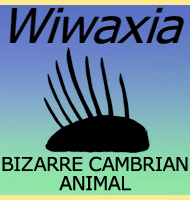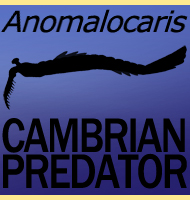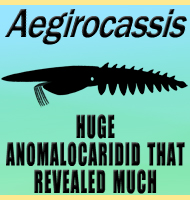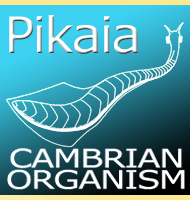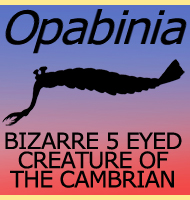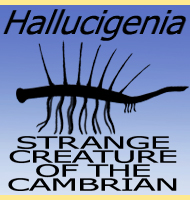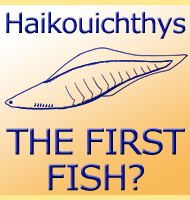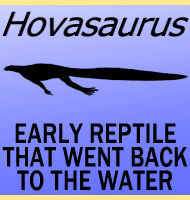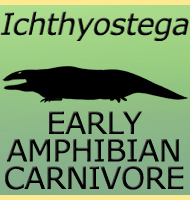


Charnia
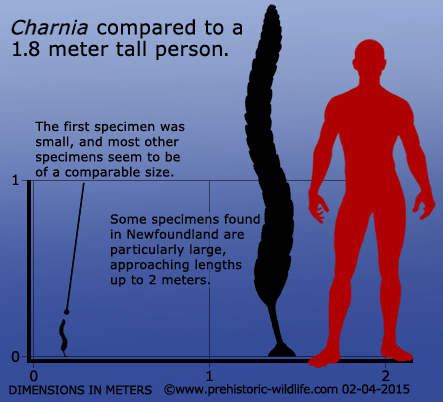
Name: Charnia
(named after the Charnwood forest in England where the frist
specimens were found).
Phonetic: Char-ne-ah.
Named By: Trevor D. Ford - 1958.
Synonyms: Glassnerina, Rangea grandis,
Rangea sibirica.
Classification: Petalonamae.
Species: C, masoni (type),
C. grandis, C. siberica.
Diet: Possibly absorbed nutrients from water.
Size: Holotype specimen roughly about 19
centimetres long, with many other specimens of comparable size.
However largest recorded individuals from Newfoundland approach up to
2 meters in length.
Known locations: Australia. Canada. England.
Russia.
Time period: Ediacaran, roughly 575-544
million years ago.
Fossil representation: Numerous specimens, many of
which are complete.
The
first ever fossil of Charnia was found in England.
It seems that the
first time this fossil was recorded was in 1956 when a 15 year
old schoolgirl named Tina Ford reported seeing the fossil to her
geography teacher. However at the time it was established ‘fact’
that the rocks in the Charnwood forest were far too old to have
fossils in them, and were laid down before animals existed, and
hence the teacher dismissed Tina’s claims of the fossil. Then a year
later in 1957, a schoolboy named Roger Mason (who would go into a
career in geology) brought the specimen to the attention of
scientists, and in 1958 the fossil was identified and named as a
genus of Trevor Ford in 1958.
Charnia
without doubt is one of the oldest lifeforms that we know about
that once lived on our planet. Though resembling a frond of a fern,
as well as perceived to be an alga or even a sea pen when in the early
days of its study, the majority of modern day researchers are certain
that Charnia was more likely a different kind of
lifeform, though one
unlike anything we currently know about today, as well as a member of
a group that at this time does not seem to have had any surviving
descendants.
The
discovery of Charnia marked the first time that a
living organism
was found in rocks that that were older than the Cambrian period.
Before this discovery it was unthinkable by scientists at the time
that fossils could be found in rocks that were then loosely termed as
Precambrian. In addition to this there also so far does not seem to
have been any survival of Charnia beyond the
Ediacaran period. Unless
living examples are one day discovered in future deep sea
exploration, then it would seem that Charnia
represents an
evolutionary dead end.
There
is much still to learn about how Charnia lived.
Analysis of
fossil beds where Charnia has been found has led to
many people
concluding that Charnia lived in very deep water,
so deep in fact
that sunlight would have been unable to reach down that far. This
would make photosynthesis impossible at such depths, and is one of
the main arguments supporting the idea that Charnia
was not a plant.
Charnia does not seem to have been like known
animal groups either
however, which makes its position in current models of the tree of
life uncertain. It seems that the fern-like appearance of Charnia
is
a result of a very simple method of growth where a latticework of
tissues would grow in repeating patens, leading to the establishment
of the uniform appearance. As far as feeding goes, most researchers
agree that Charnia probably absorbed nutrients from
the water around
it, but the exact method of absorption is still currently a matter of
debate amongst researchers.
Further reading
- Pre-Cambrian fossils from Charnwood Forest. - Proceedings of
the Yorkshire Geological Society 31(3):211-217. - Trevor D.
Ford - 1958.
- First occurrence of the Ediacaran fossil Charnia
from the southern
hemisphere. - Alcheringa 22 (3/4): 315–316. - C.
Nedin & R. J. F. Jenkins - 1998.
- Morphology and taphonomy of an Ediacaran frond: Charnia
from the
Avalon Peninsula of Newfoundland. - Geological Society, London,
Special Publications 286 (1): 237–257. - M. Laflamme,
G. M. Narbonne, C. Greentree & M. M. Anderson
- 2007.
- Charnia and sea pens are poles apart. -
Journal of Geological
Society 164 (1): 49. - J. B. Antcliffe, M. D.
Brasier - 2007.
- Charnia at 50: Developmental Models for
Ediacaran Fronds. -
Palaeontology 51 (1): 11–26. - J. B. Antcliffe,
M. D. Brasier - 2008.
Random favourites
 |
 |
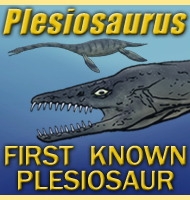 |
